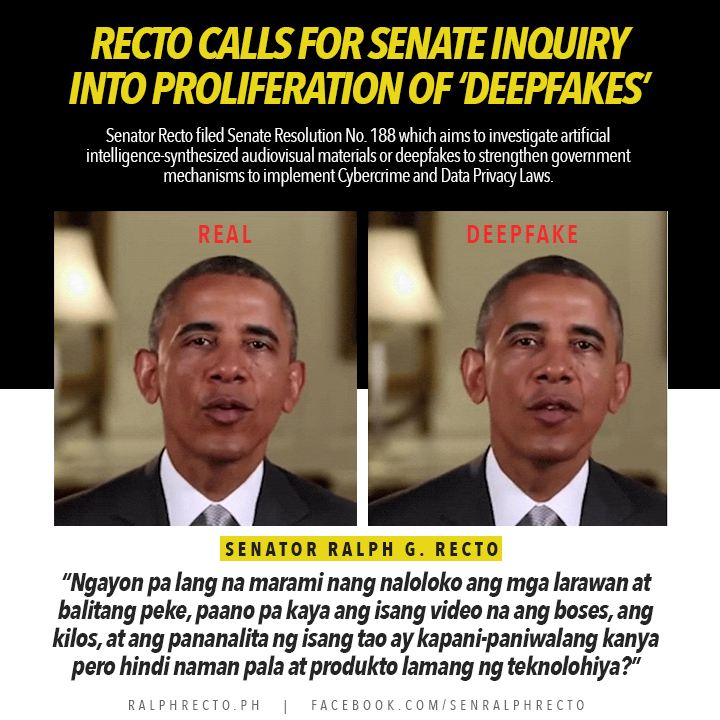Recto on the filing of Resolution calling for legal framework on ‘Deepfakes’
At a time when a crudely-done images, in which their falsity is obvious, can lead many people to believe them as real, then sophisticated videos in which the likeness of a person is seamlessly integrated can have troubling effects on society if used to foment lies.
Ngayon pa lang na marami nang naloloko ang mga larawan at balitang peke, paano pa kaya ang isang video na ang boses, ang kilos, at ang pananalita ng isang tao ay kapani-paniwalang kanya pero hindi naman pala at produkto lamang ng teknolohiya?
These are manufactured videos which are hard to debunk and disprove as works of fiction because of the sophisticated way they are done.

The social damage malicious deepfakes can create is frightening.
They can be used to mimic a president making a public announcement contrary to the public good.
Digital impersonation can harm the presidency.
They can create panic if a public official is the subject of a deepfake warning, for example, of a calamity about to come.
They can engineer fraud if a celebrity is seen in a deepfake ad endorsing a product that is a scam.
They can subvert elections through attack ads in which the content is false but the image and voice of the person talking in it appears to be 100 percent authentic as his.
They can damage reputations if one jilted lover can manufacture revenge porn.
To the public, these malicious works will be hard to detect. Their high quality can lead a gullible public to view them as real. When a deepfake is indistinguishable from the real one, most people will not have the faculties to determine if its content corresponds to the truth.
In the US, there have been initiatives to respond to the threats posed by deepfakes. A “Malicious Deep Fake Prohibition Act” was introduced in the US Senate, and many states have introduced and even adopted similar legislation.
Law has always been behind technology. But in the case of deepfakes, we cannot be far behind the curve.
The resolution’s intent is to trigger a discussion on this phenomenon, limited to use of this technology for criminal purposes. It does not include its use for creative, legal and beneficial endeavors like in cinema.

